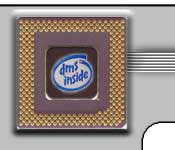|
Optimized CMOS Photodetector Structures for the Detection of Green Luminescent Probes
in Biological Applications
Rachel Yotter, Michael Warren, and Denise Wilson

Recent developments in lab-on-a-chip applications have increased the need for low-power, small-footprint photodetectors to detect
luminescent reporters used to monitor biological events. Presented is a CMOS photodiode structure that is optimized to detect green light,
the peak emission wavelength of commonly used fluorophores and other luminescent probes. The photodiode geometry uses a lightly doped
striped cathode geometry to maximize the depletion region in areas of highest light absorbance, increasing the sensitivity to green light.
The devices, realized in 1.5Ám CMOS technology, have up to a 63% increased signal-to-noise response for green light compared to
blue-enhanced CMOS photodiode structures. These devices also generate an output 4.5 times larger than conventional CMOS detectors for
detecting fluorescent emissions from a 1ÁM fluorescein solution. The devices are designed to be integrated in total analysis systems which
rely on the detection of fluorecent or phosphorescent reporters, and which are compact, low-power, and low-cost.
|



